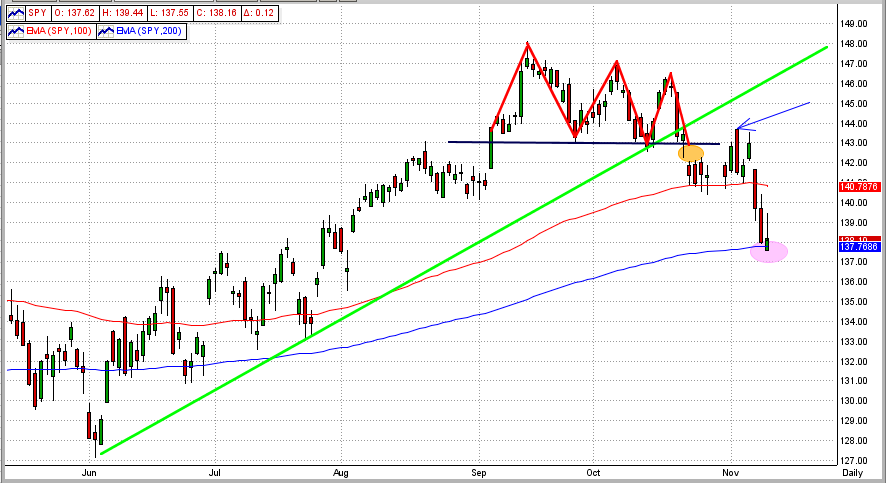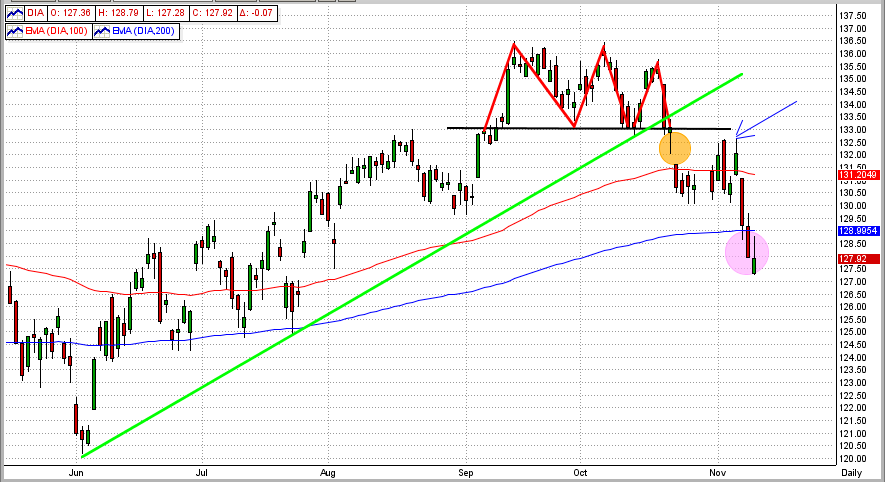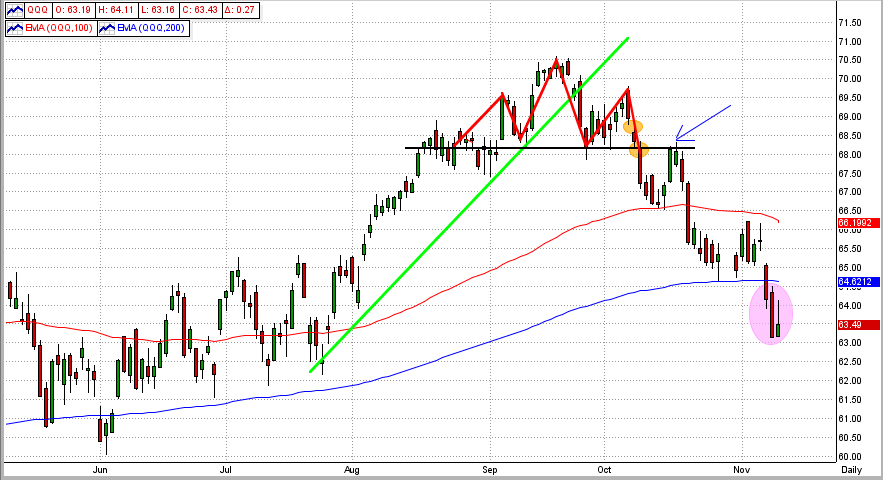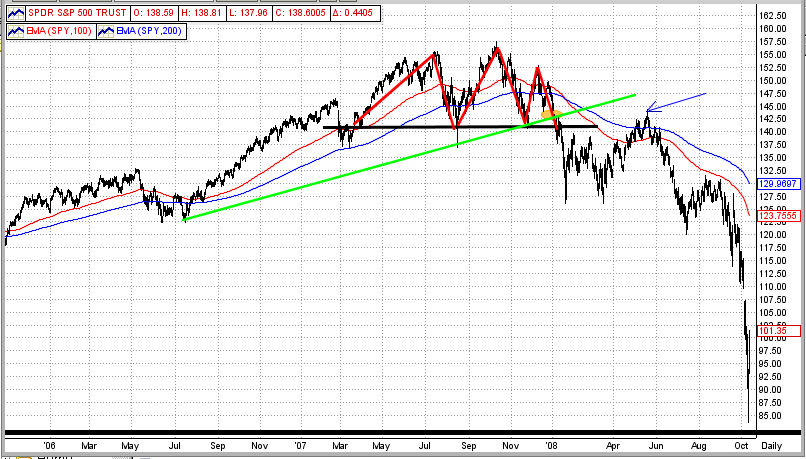Monday, November 12 2012
This market pullback is scary all right, but is it leading into a full-out bear market ?
- First, let's take a look at how markets normally behave heading into a bear market.
For a bear market to occur, it is usually preceded by most of the following:
1) a 3-6 year bull market,
2) bad news raises its ugly head (economic, political, etc.),
3) the market begins to react negatively to the bad news,
4) we see "topping" behavior in recent market moves,
5) a correction that breaks several important long-term resistance levels occurs,
6) an uptick that challenges some previous downside resistance levels occurs somewhere along the way,
7) a "free fall" begins, and
8) if the "free fall" is widespread (SPY, DIA, QQQ, small/large cap, across sectors, etc), it turns into a secular
bear market.
So, how has the market (as measured by the S&P 500 ETF, SPY) performed according to the above ?
(please refer to the graphs below)
1) we have had a bull market since March 2009 (S&P 500 up over 120%),
2) the economic/political news from all over the world (including the USA) couldn't be much worse,
3) the SPY is down almost 10% from its mid-September high,
4) the SPY (and the DIA and QQQ) have all formed either a triple top or a head-and-shoulders top (red triangles),
5) this last drop had broken the SPY's 6-month up trendline (green line) , its head-and-shoulder's
neckline (black line), its 100-day EMA (red line), and its 200-day EMA (blue line)
- the orange ellipse shows down "gaps"
6) after it broke the neckline, the SPY made a kick up to test that resistance level (blue arrow),
7) we are NOT technically in a "free fall" yet, but the future does not look good, and
8) the SPY barely broke its 200-day EMA and has only been there for one day, but the DIA and QQQ have
experienced very definitive 200-day EMA breaches (shown by the purple ellipses in the graphs).
Technical analysis would lead us to believe that we are on the verge of a serious downturn, but just the slightest good news (like our executive and legislative branches getting things done for our country instead of staying in gridlock for their own personal gains), could change that in a heartbeat. Thankfully, MIPS is much better equipped than us to make long/short decisions in this environment. Besides that, a mechanical mathematical system like MIPS is not too proud or too stubborn to admit a mistake and reverse its decision if it has made an incorrect call (as opposed to human behavior). So, as usual, let's wait for MIPS to tell us what to do next. BTW, all MIPS models are short now.
PS - Take a look at the 4th graph below (labeled 2007) to see how the market was unfolding in 2007.
See any similarities ?
SPY
 DIA
DIA

QQQ

2007

|